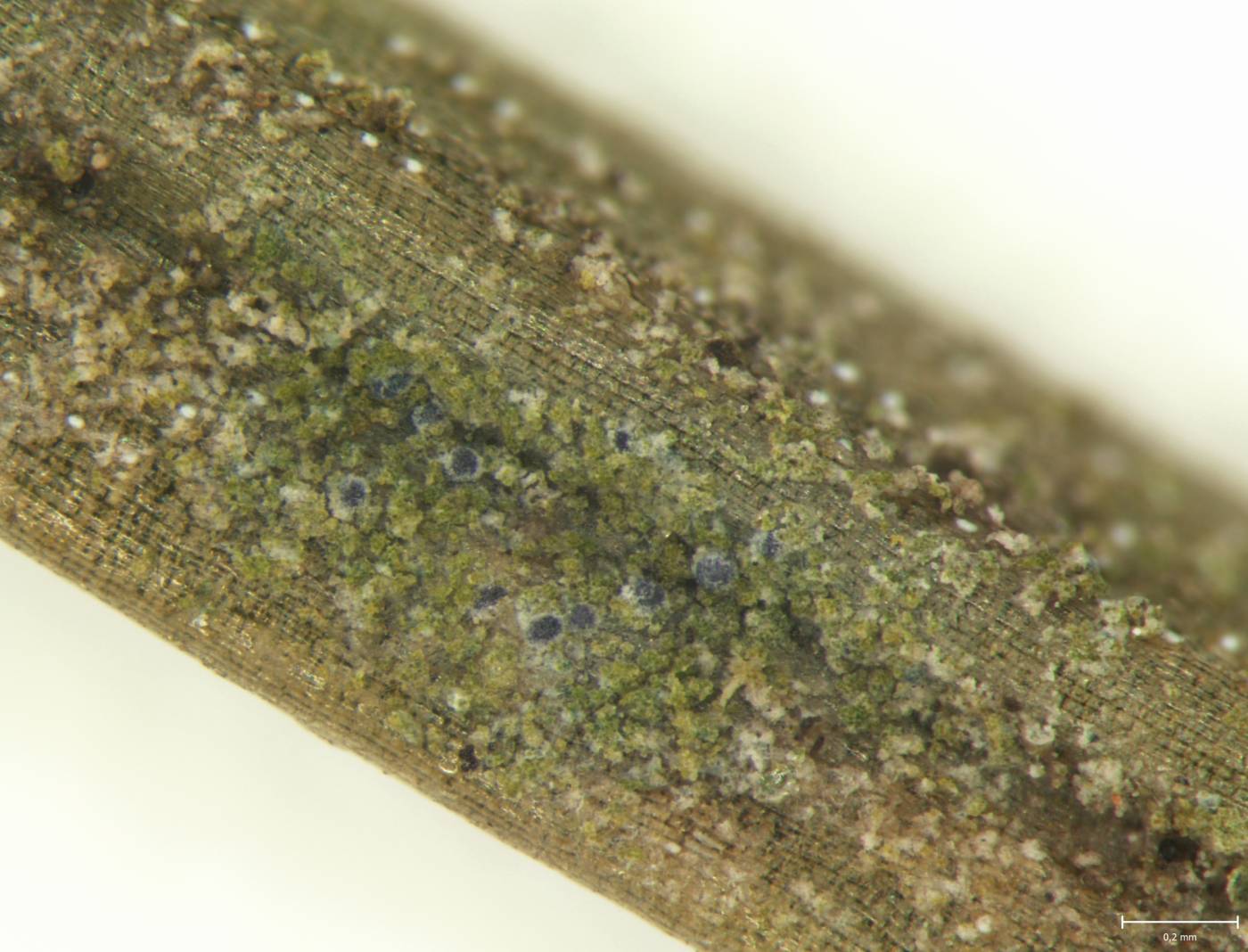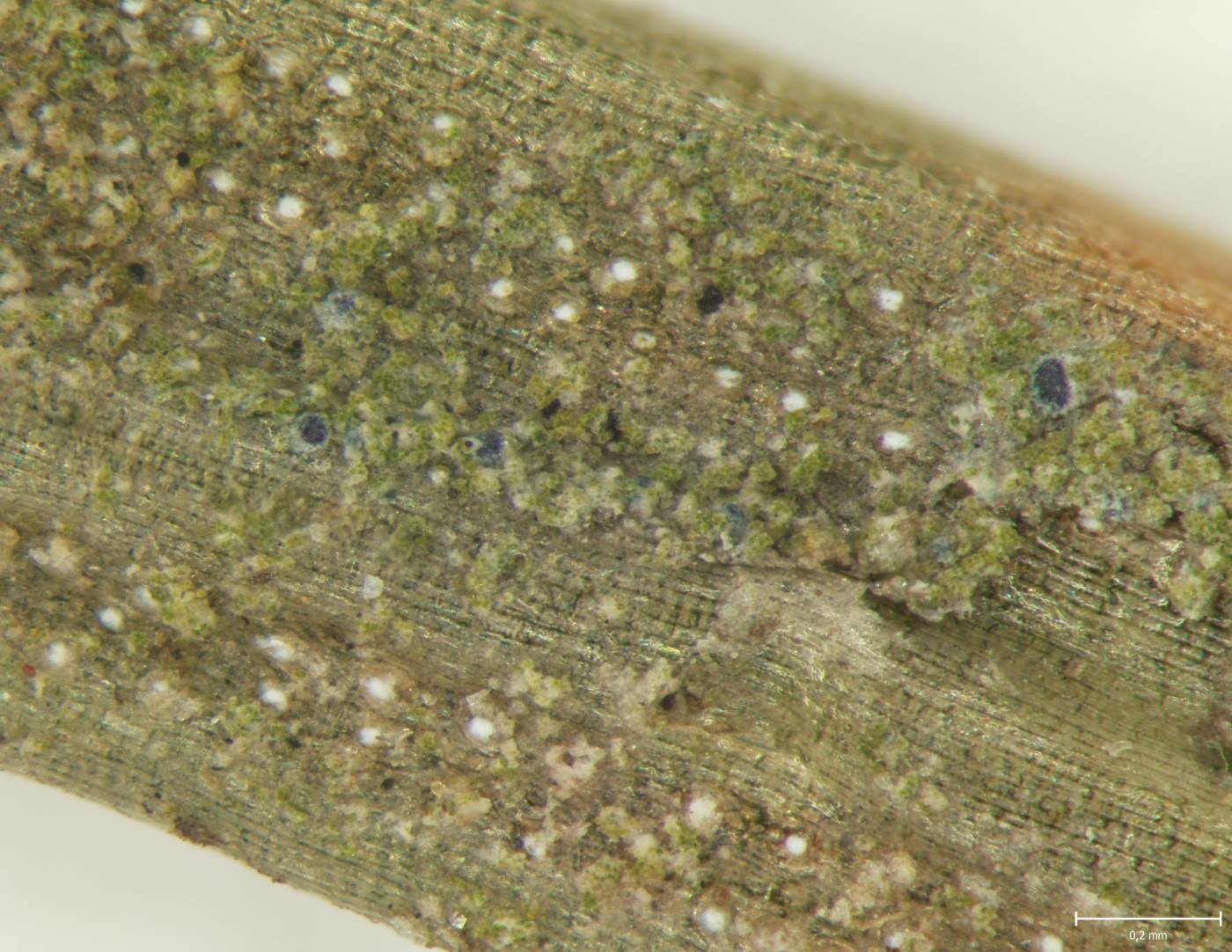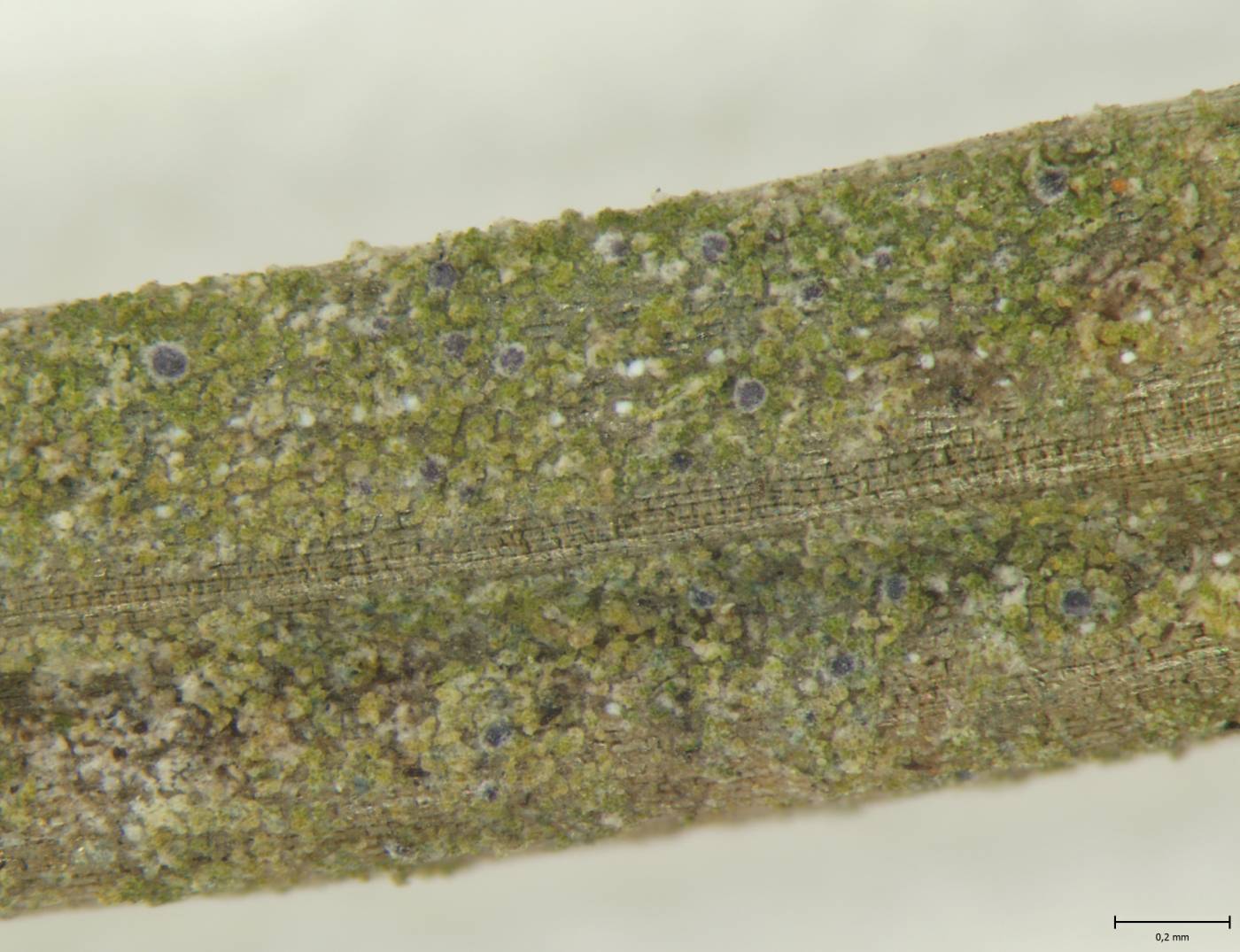An inconspicuous lichen with a thin grey thallus covered with dark grey-blue pycnidia in which narrowly ellipsoid conidia are formed. Fruiting bodies are usually missing. The species was described from oceanic localities in northern France and Madeira (Sérusiaux 1998). Later it has been found also in south-eastern Britain (Giavarini & Sérusiaux 2009). It is a typical follicolous lichen, growing on perennial leaves of evergreen woody plants (Buxus, Camellia, Laurus azorica). In the Czech Republic, the it was first collected in 2020 in the locality Týřov in the Křivoklát region, where it is locally abundant in moist forest habitats. Its occurrence in the Czech Republic is mostly linked to spruce needles, but once, the species was recorded on a wet rhyolite stone on a brook bank in a community of other, typically epiphytic lichens (e.g. Fellhanera bouteillei). There is another very similar lichen, Fellhaneropsis myrtillicola, occurring on spruce needles in the Czech Republic. It forms almost identical grey-blue pycnidia but produces either very different macroconidia or narrower and longer microconidia of different shape.
Literature: Giavarini V. & Sérusiaux E. (2009): Byssoloma Trevisan (1853). – In: Smith C. W., Aptroot A., Coppins B. J., Fletcher A., Gilbert O. L., James P. W. & Wolseley P. A. [eds], The lichens of Great Britain and Ireland, p. 239–240, The British Lichen Society, London. Sérusiaux E. (1998): Deux nouvelles espèces de Byssoloma Trev. (lichens, Pilocarpaceae) d'Europe occidentale et de Macaronésie [Two new species of Byssoloma Trev. (Lichenes, Pilocarpaceae) from western Europe and Macaronesia]. – Cryptogamie, Bryologie-Lichénologie 19: 197–209.
taxonomic classification:Ascomycota → Lecanoromycetes → Lecanorales → Pilocarpaceae → Byssoloma
Red List (Malíček 2023):DD – data deficient
Occurrence in the Czech Republic
All records: 3, confirmed 3. One click on a selected square displays particular record(s), including their source(s).


